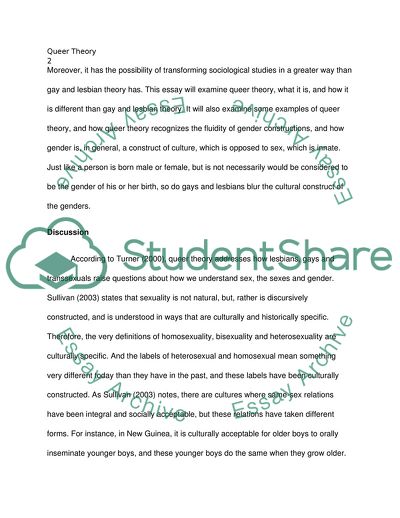Cite this document
(What is Queer Theory Essay Example | Topics and Well Written Essays - 1750 words, n.d.)
What is Queer Theory Essay Example | Topics and Well Written Essays - 1750 words. https://studentshare.org/sociology/1793723-what-is-queer-theory
What is Queer Theory Essay Example | Topics and Well Written Essays - 1750 words. https://studentshare.org/sociology/1793723-what-is-queer-theory
(What Is Queer Theory Essay Example | Topics and Well Written Essays - 1750 Words)
What Is Queer Theory Essay Example | Topics and Well Written Essays - 1750 Words. https://studentshare.org/sociology/1793723-what-is-queer-theory.
What Is Queer Theory Essay Example | Topics and Well Written Essays - 1750 Words. https://studentshare.org/sociology/1793723-what-is-queer-theory.
“What Is Queer Theory Essay Example | Topics and Well Written Essays - 1750 Words”. https://studentshare.org/sociology/1793723-what-is-queer-theory.


